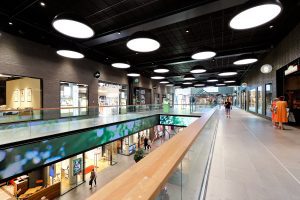Today’s rapidly evolving tech world can essentially be summed up in one word: connectivity. It may seem cliché, but every “dumb device” we turn into a “smart device” presents an opportunity for innovation, and in turn expands the connected world we are all a part of. In the words of Akamai Technologies, the cloud services giant that serves roughly one third of the world’s daily web traffic, “You don’t just GO online, you ARE online.”
One industry that has been hugely impacted by evolution of technology, particularly the growth of the Internet of Things (IoT), is healthcare. Intel estimates that almost one third of smart devices are in healthcare buildings – not in your pocket or on your wrist. Medical facilities have embraced IoT so much that the industry has carved out its very own piece of the pie, the Internet of Medical Things (IoMT). According to Forbes, there are currently 3.7 million devices that make up the IoMT, a number that continues to grow with every pulse oximeter and heart rate monitor that comes online. With this army of devices at their command, healthcare organizations are changing the way they keep people healthy, safe, and connected.
In this hyperconnected world, top healthcare administrations are constantly evaluating options and planning the evolution of their facilities. A shining example of this forward thinking is Penn Medicine. Recognized as one of the best hospitals in the United States, Penn Medicine provides state-of-the-art healthcare for patients across the United States and around the globe. To continue to meet the evolving needs of this diverse population and provide the latest treatments and care techniques, Penn Medicine decided it needed to expand its footprint and build a new hospital tower, known as the Penn Medicine Pavilion, on its west Philadelphia campus.
In order to future-proof the facility as much as possible, Schneider Electric spent the last two years collaborating with Penn Medicine, reviewing the low voltage systems and possible integrations to be designed and delivered in the Pavilion. Leveraging Schneider’s EcoStruxure for Healthcare solutions, Penn Medicine is implementing IoT-enabled systems, including building management and power monitoring and control, that reduce costs, ensure reliable energy, increase staff efficiency and much more, long into the future. One interesting application of this system is Schneider’s Clinical Environment Optimization solution, which saves energy by automatically adjusting room conditions based on occupancy data. Continuously optimizing temperatures will allow Penn Medicine to use energy efficiently and keep climate control costs under control. The substantial savings can then be reinvested in the facility to continuously improve patient care initiatives.
Stephen Greulich, Senior Project Manager at the University of Pennsylvania Health System states, “the team at Schneider Electric has been a partner throughout the design and now construction of the Pavilion. They are embedded into the project team and are helping us closely control energy usage and costs for the operation of the building.”
In an age where businesses are relying more and more on connectivity, a digital hospital is only as good as its technology backbone. Learn more about the Penn Medicine and Schneider Electric partnership and the plans for the Pavilion.


